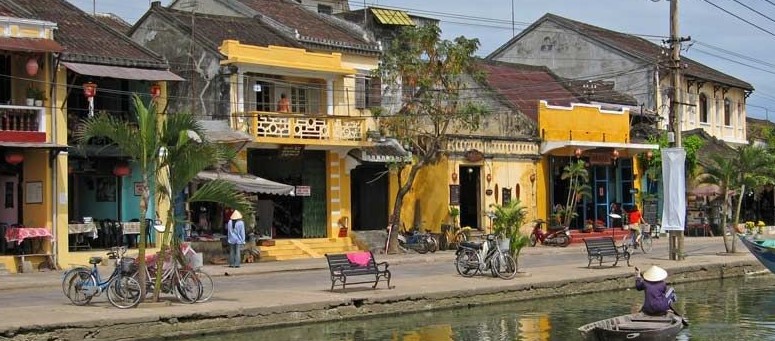
Hoi An town is small
and peaceful, the kind of place where you may get stuck for a few days, whether
it is intentional or not. Originally known as Faifo, this antique town is
bordered on its southern side by the Thu
Bon River,
along which there's a number of small cafes. Despite the fact that it is now a
tourist haven, the artistic atmosphere and local friendly people create an
inviting environment.
Hoi An was an
important port developed in 17th century and remained so for a long time. There
used to be canals parallel to the streets, so merchandise could be loaded
straight from the back of houses onto the boats. Hoi An’s continuance as a port
lasted right up until the early years of the 20 century, when the river became
silted up forcing the cargo ships to call at Da Nang instead.
In the past Hoi An has
been used by the Japanese, Portuguese, Dutch, French and the large remaining
Chinese community where all sorts of produce and wares were traded. Remnants of
these past traders’ influences can still be seen lining the streets of Hoi An.
There are nine different types of historical sites in Hoi An with an average
age of 200 years. They include private houses, family chapels, community halls,
communal houses, temples, pagodas, bridges, wells and tombs. Many of these
buildings have been maintained close to their original form, allowing you
imagination to recreate a prosperous trading town. The houses are small and colorful
with wooden doors and two round "wooden house's eyes" above, window
shutters and ornamental furniture. A pleasant change from the iron bars and
metal grates of other towns.
Hoi An is full of
shops selling artwork, from lifelike memorial family portraits, to stylized
images of Hoi An houses and streets. Next door to the art shops are places
selling souvenir statues, ceramic plates, and ‘antique’ bowls. At the market
place beside the river, you can pick up almost anything you want. Tourists are
often being lured into the markets to buy silk and to have quality garments
tailor made. You can have anything from dresses and trousers to shirts and hats
made for a cheap price.
Another noticeable
quality of Hoi An is its relative silence. There are few cars and people do not
feel the urge to use their horns every two seconds. The streets are filled with
the hum of voices, motorbikes and the shuffling of thongs along the ground. Hoi
An is small enough to get around on foot, and you will need a set of wheels if you
are going to Cua Dai Beach, or on a day trip to the Marble Mountains or Da
Nang.
A relaxing activity
around sunset is to hire a boat from the waterside by the market place. Many of
the locals will wait on the river and offer you this service throughout the day
and night.